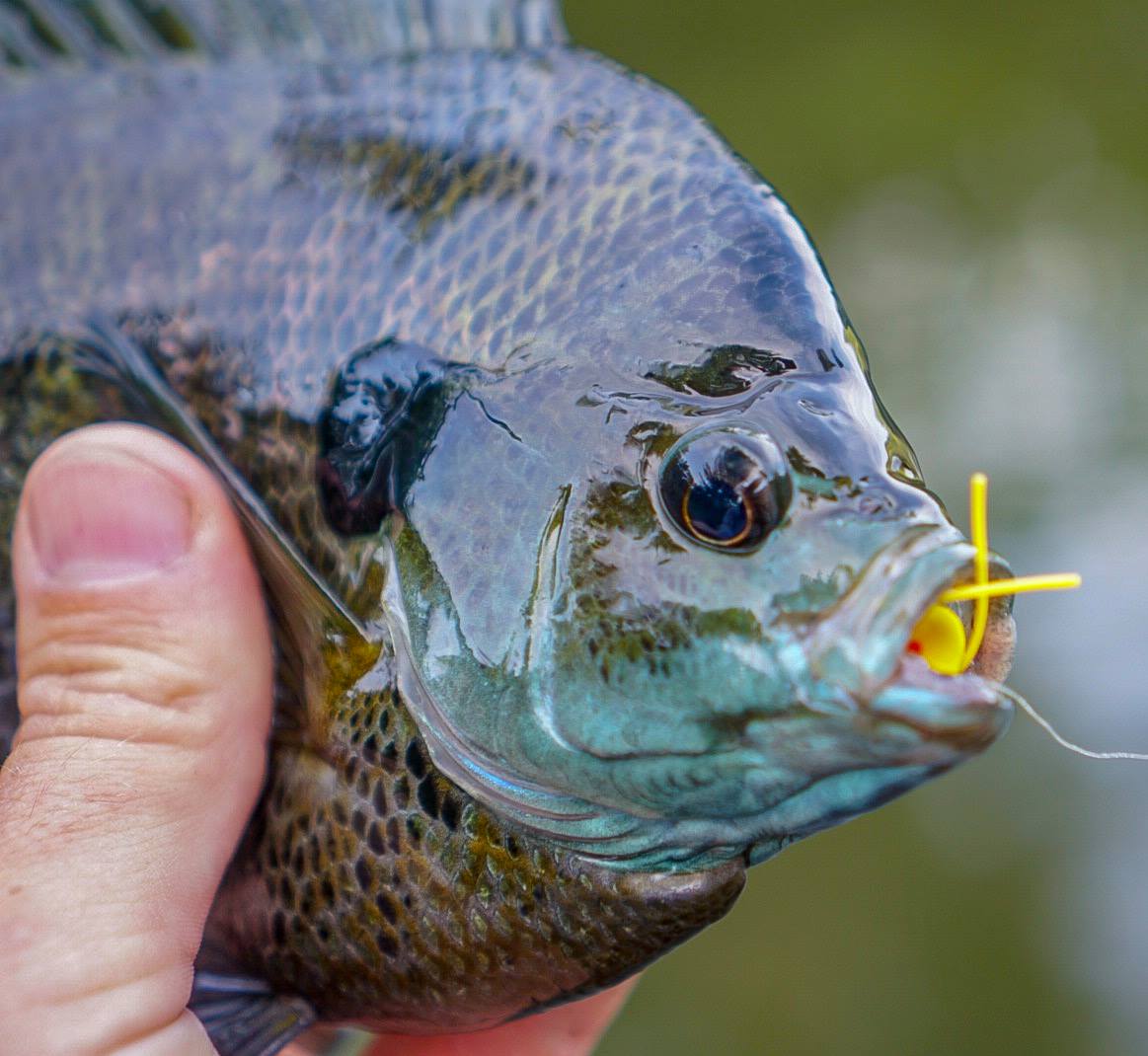Is it brim? Or bream? Or both? They’re known by different names — panfish, bluegill, pumpkinseed, sunfish and shellcracker among others.
Semantics aside, theses small freshwater fish are known for their voracious appetites and fly-rod fun. Everyone who has ever held a cane pole in their youth probably caught one or two of these hand-sized creatures.
They’re everywhere in the Lower 48. You’ll find them in ponds, lakes and rivers. And there’s no better way to shake off the rust from a long-rod layoff. Panfish provide plenty of consistent action — on topwater or subsurface.
Below are a few tips for these feisty little guys.
When and Where for Panfish
Any pond or lake in the continental United States probably has panfish. Because they’re a warmwater species, they’re more prevalent in the south, southeast and mid-atlantic regions.
They’re not as sexy as trout, but they’re infinitely more accessible. Any retention pond or golf course pond likely will hold bream. With trout, you might have to travel. With brim, you might not have to leave your neighborhood.
The best time of year for panfish, in general, is in the spring, when the fish move into the shallows to spawn. The timing of this depends on geography and water temperature. A good rule of thumb is 60, 65 degrees.
How to Fish for Panfish
Once you find a body of water, look for shade and shoreline structure — logs, patches of grass, stumps, sticks, etc. Work these areas early and late in the day. You can catch panfish all day, but it’s tougher as the sun rises, particularly once summer arrives.
Once the air and water temperatures warm, the little fish will head for slightly deeper water. Look for drop-offs. You may need an intermediate line to find deeper fish, but you can keep things simple with a floating line and a longer leader.
Simply cast, count to 10, let your weighted fly sink, then slowly retrieve your offering. How long you count, of course, depends on the depth of the water and where the fish are holding. A bit of trial-and-error is usually required.
You can also use a strike indicator. The plop of the indicator often will cause curious fish to investigate and yield a strike.
Flies to Use for Panfish
Poppers, poppers and more poppers. You simply can’t have enough of these. Boogle bugs and Sneaky Petes and Bumble Bees are known for their productivity. Toss these toward cover, let the rings created by the impact of the offering hitting the water dissipate and strip. Repeat, varying the intensity of the strips and the length of the pauses. Fishing with poppers is a waiting game. Panfish like to study their prey before the strike. Wait as long as you can stand it.
For subsurface flies, you can’t go wrong with standard trout nymphs —- a hare’s ear, pheasant tail or a brassie. A hopper-dropper can be a productive tactic when crickets and beetles scurry about.
For streamers, you can’t beat a woolly bugger or a muddler minnow. Bass like both as well.
The Gear for Panfish
Some anglers prefer a 2 or 3-weight rod. Small fish, light rod. Not a bad choice. However, it’s not a bad idea to swing a 5-weight, which provides enough backbone to make those bigger poppers turn over. And if you happen to run into a bass, you will have enough stick to win that battle.
TFO’s Bug Launcher, Axiom II and NXT are good choices. You don’t need a high-end reel. The NXT LA is a great value.
As for a line and leader. Stick with a weight-forward line and a 3 or 4X, 7-to-9 foot leader. Remember, this is not technical fishing. When in doubt, simplify.
Panfish often inhale their prey, so don’t forget your hemostats. Panfish have tiny mouths. Pliers usually don’t dig deep enough.
Panfish are a blast. They’re easy to catch and almost always willing to spar. They’re great for kids to learn or for inexperienced anglers to build confidence. Even veteran long-rodders can benefit.
Questions, comments about panfish on a fly rod? Feel free to visit one of our social media pages.







